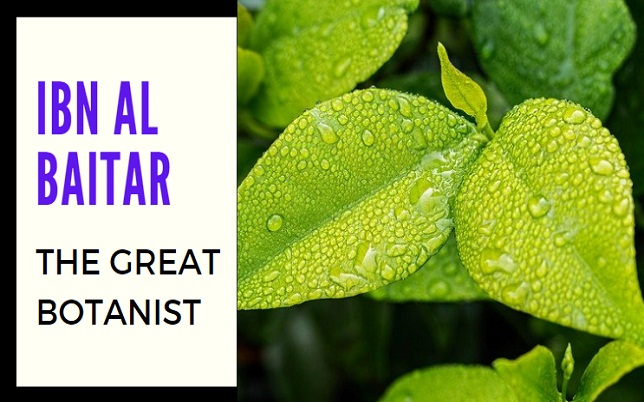Observation and experiment are the two sources for acquiring scientific knowledge. Aristotle, the father of Greek sciences, made imperishable contributions to physics, astronomy, biology, meteorology and other sciences. It may be noted that The Greek method of obtaining scientific knowledge was mainly speculative hence science as such could make little headway in Greece.
Contents
Muslims Gave New Vision & Orientation to Science
The Arabs who were more realistic and practical in their approach adopted the experimental method for harnessing scientific knowledge. Observation and experiment formed the vehicle of their scientific pursuits; hence they gave a new orientation to science of which the world was totally unaware.
Their achievements in the field of experimental science added a golden chapter to the annals of scientific knowledge of the world and opened a new vista for the growth of modern sciences.
Al-Ghazali was the follower of Aristotle in logic, but among Muslims Ishraqi and Ibn-Taimiya were first to undertake the systematic refutation of Greek logic. Abu Bakr Razi criticized Aristotle’s first figure and followed the inductive spirit which was reformulated by John Stuart Mill.
Ibn-Hazm in his well-known work ‘Scope ofLogic’ lays stress on sense perception as a source of knowledge and Ibn-Taimiya in his ‘Reformation ofLogic’, proves beyond doubt that induction is the surer form of argument, which ultimately gave birth to the method of observation and experiment.
Experimental Sciences: A Totally Muslim Contribution
It is absolutely wrong to assume that the experimental method was formulated in Europe. Roger Bacon, who, in the West is known as the originator of the experimental method, had himself got training from the pupils of Spanish Moors, and had learnt everything from Muslim sources. The influence of Ibn Haitham on Roger Bacon is clearly visible in his works.
Europe was too slow to recognize the Islamic origin of its much advertised scientific (Experimental) method. Writing in the Making of Humanity, Briffault admits:
“It was under their successors at the Oxford School that Roger Bacon learned Arabic and Arabic science. Neither Roger nor his later namesake has any title to be credited with having introduced the experimental method.
Roger Bacon was no more than one of the apostles of Muslim science which he transmitted to Christian Europe. As a matter of fact he never wearied of declaring that the knowledge of Arabic and Arabic science was for his contemporaries the only way to true knowledge.
Discussions as to who was the originator of the experimental method are part of the colossal misrepresentation of the origins of European civilization.
The experimental method of Arabs was by Bacon’s time widespread and eagerly cultivated throughout Europe….
Science is the most momentous contribution of Arab civilization to the modern world, but its fruits were slow in ripening. Not until long after Moorish culture had sunk back into darkness, did the giant which it had given birth to raise his might.
It was not science only which brought Europe back to life. Other and manifold influences from the civilization of Islam communicated its first glow to European life….
For although there is not a single aspect of European growth in which the decisive influence of Islamic culture is traceable, nowhere is it so clear and momentous as in the genesis of that power which constitutes the permanent distinctive force of the modern world, and the supreme source of its victory-natural science and the scientific spirit. …
The debt of our science to that of the Arabs does not consist in startling discoveries or revolutionary theories: science owes a great deal more to Arab culture. It owes its existence. The ancient world was, as we saw, pre scientific.
The astronomy and mathematics of Greeks were a foreign importation never thoroughly acclimatized in Greek culture. The Greeks systematized, generalized and theorized, but the patient ways of investigation, the accumulation of positive knowledge, the minute methods of science, detailed and prolonged observation and experimental enquiry were altogether alien to the Greek temperament. Only in Hellenistic Alexandria was any approach to scientific work conducted in the ancient classical world.
What we call science arose in Europe as a result of a new scientific inquiry, of new methods of investigation, of the method of experiment, observation, measurement of the development of mathematics in a form unknown to the Greeks. That spirit and these methods were introduced into the European world by the Arabs.”
In his outstanding work, ‘The Reconstruction of Religious Thought in Islam‘, Dr. Muhammad Iqbal, the poet of Islam writes:
“The first important point to note about the spirit of Muslim culture then is that for purposes of knowledge, it fixes its gaze on the concrete, the finite. It is further clear that the birth of the method of observation and experiment in Islam was due not to a compromise with Greek thought but to a prolonged intellectual warfare with it.
In fact the influence of Greeks who, as Briffault says, were interested chiefly in theory, not in fact, tended rather to obscure the Muslim vision of the Quran, and for at least two centuries kept the practical Arab temperament from asserting itself and coming to its own.”
Thus the experimental method introduced by the Arabs was responsible for the rapid advancement of science during the medieval times.
This experimental method was universally applied by the Arabs to their scientific investigations, also by Ibn al-Baitar, the greatest Muslim natural scientist.
Life of Ibn Al Baitar
Abu Muhammad Abdullah ibn Ahmad ibn al-Baitar Diya al-Din al-Malaqi was the last of the great Muslim scientists who had undertaken an extensive tour of the Mediterranean littoral in quest of rare botanical herbs grown there.
Born in Malaga (Spain) towards the end of the 12th century A.C. he rose to be the celebrated Spanish Muslim botanist and pharmacist, who, according to George Sarton, was ‘the greatest (botanist) of Islam and the Middle ages’. Ibn al-Baitar means son of a horse doctor or farrier. His father was a farrier.
He received his early education from Abul Abbas al Nabati, who was a renowned herbalist of his time and collected plants around Seville (Spain) along with his teacher. He greatly owed his interest and knowledge of botany to his illustrious teacher.
He set out from Spain about 1219 A.C. travelling in North Africa and passing through Bugia, Constantine, Tunis, he sailed to the southern coast of Asia Minor reaching Adalia in 1224 A.C. Later he entered the service of the Ayubid King, Malik al-Kamil as his Chief Herbalist at Cairo and was called ‘Rais ala Sairi-i-Ashshabin‘.
In 1237, when the rule of Malik al-Kamil was extended to Damascus also, Ibn Baitar moved to that city along with his patron. At last he settled down in Damascus and remained in service of Malik al-Saleh (1240-49) who succeeded Malik al-Kamil.
Occasionally he made extensive tours of Arabia, Syria, Palestine and Iraq in search of herbs grown there. He had made a thorough study of the plants growing in countries bordering the Mediterranean sea. He died in Damascus in 1248 A.C.
Contributions of Ibn Al Baitar
Ibn Al Baitar roamed about in search of plants and collected herbs on the Mediterranean littoral, from Spain to Syria. His main work, a collection of simples known as ‘Kitab al Jami fi Adwiya al Mufrada‘, is the most outstanding botanical work in Arabic.
According to a well-known Western critic; “This book, in fact, is the most important for the whole period extending from Dioscorides down to the 16th century.“
It is an encyclopedic work on the subject. Describing more than 1400 medical drugs and comparing them with the records of more than 150 ancient and Arabian authors, this book deals with about 200 novel plants which were not known up to that time. It is an invaluable book containing simple remedies regarding animals, vegetables and minerals.
Being a methodical compilation based on personal observations, it deals with simples, drugs and various species of food. Besides its own original contributions, the book contains the whole of Dioscorides and Galens knowledge on the subject. Al-Razi and Ibn Sina have also been frequently quoted by him.
The synonyms of plant names have received his special consideration, and he has given the names of the plants not only in Arabic and Greek but also occasionally in Latin, Persian, Berber and Arabic dialect of Spain.
His ‘Jami‘ is acclaimed by Meyer (Gesch der Botanik) as “a monument of industry“.
According to Max Meyerhof, “It is a work of extraordinary erudition and observation and is the greatest of the Arabic books on botany”. Latin version of his Simplicia was published in 1758 at Cremona.
His second monumental work ‘Kitab al Mughani fil Adwiya al-Mufrada’ is a materia medica dealing with medicine. It is almost the reversion of the first book. Though dealing with the same simples and vegetables it is arranged in therapeutical order instead of alphabetical one.
This book contains 20 chapters including those dealing with simples for diseases of head, ear, eye, cosmetics and simples against fevers, antidotes and most common drugs.
His ‘Mughani‘ is a materia medica and not a natural history. In this book, the authorities quoted also differ from the first one and the celebrated surgeon Abdul Qasim has been too frequently quoted in it. The sources of quite a few items of this book may be traced to al Idrisi and al Ghafiqi.
Both of his well-known works which were completed during the first quarter of the 13th century were dedicated to his patron Malik al-Saleh Ayubi. Ibn al Usaibia who was a disciple of Ibn Baitar accompanied him during his botanical excursions around Damascus.
Impact of Ibn Al Baitar on Science
The influence of Ibn al-Baitar may be traced to the eastern as well as Western writers on the subject. His two monumental works which were considered authority on the subject influenced the contemporary and later botanists. Andrea Alpago (latter half of 15th century) made use of it to enrich his glossary of Ibn Sina’s ‘Qanun’.
His article on Lemons was translated from Al-Baitar’s ‘Jami’. The first Western orientalist who was considerably influenced by al-Baitar’s writings was Guillaume Postal (1510-1581 A.C.). The first complete translation of Jami in any Western language appeared in 1758 A.C.
Ibn al-Baitar is undoubtedly the greatest botanist of Islam and of the Middle Ages whose writings prepared the ground for the development of botanical science during the modern times.

